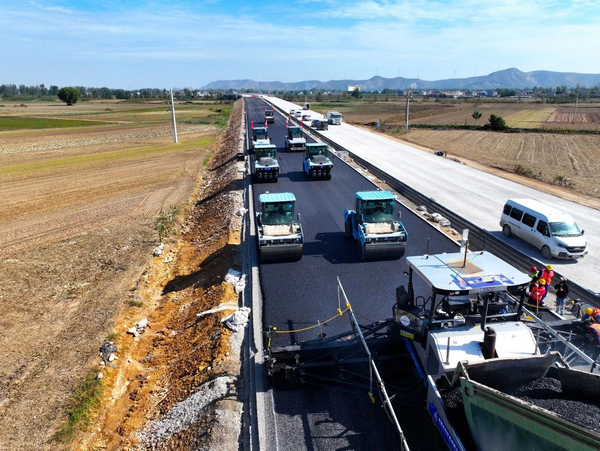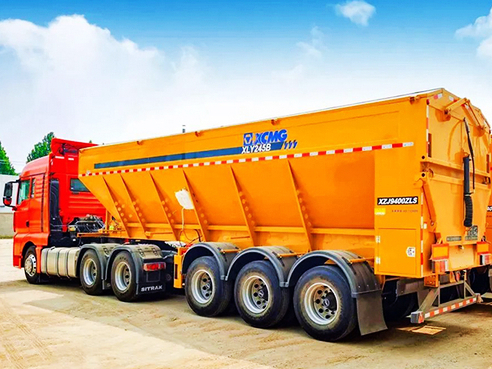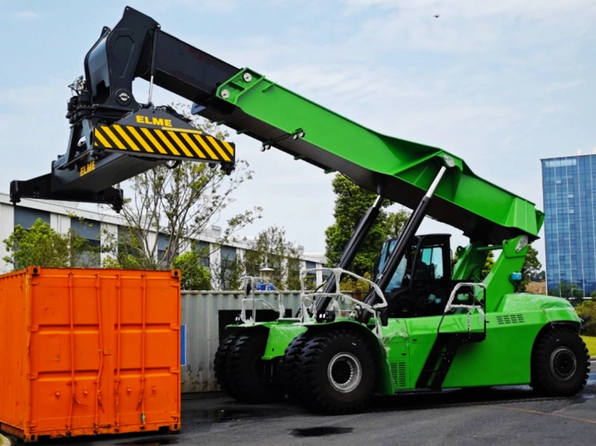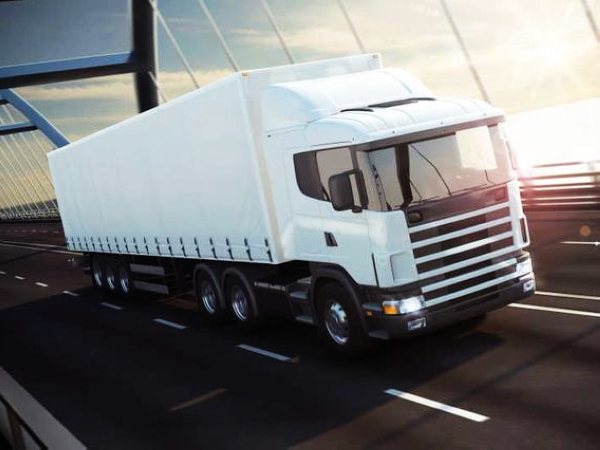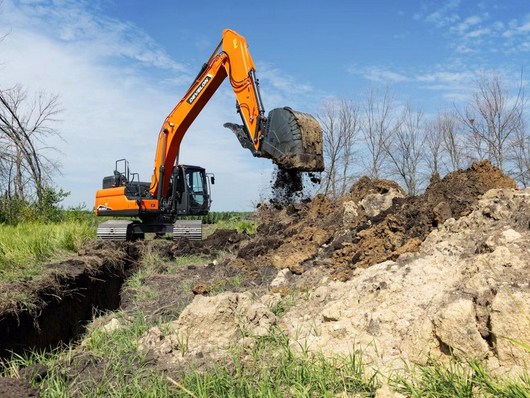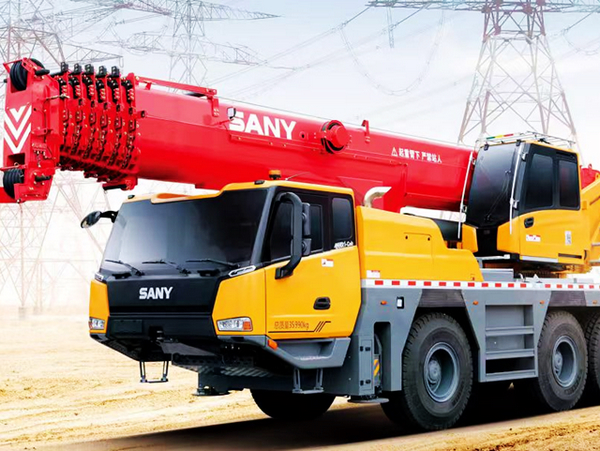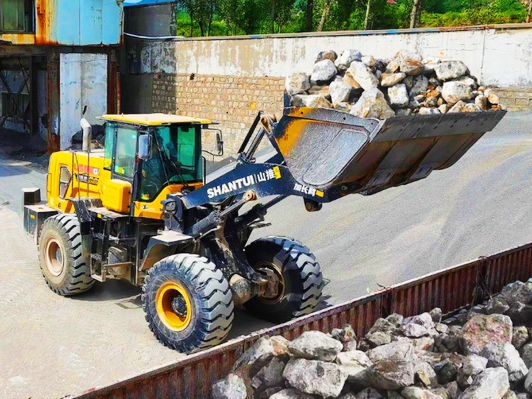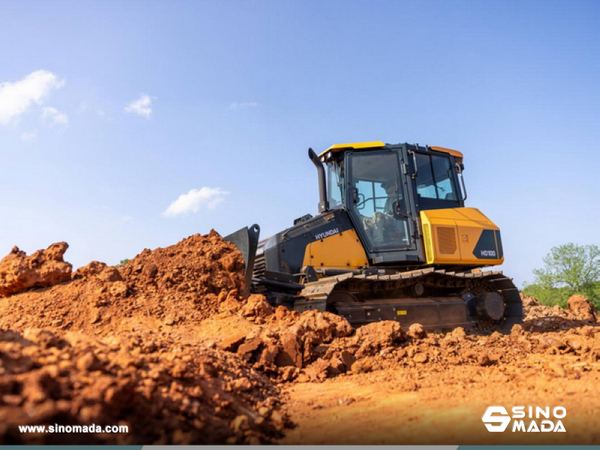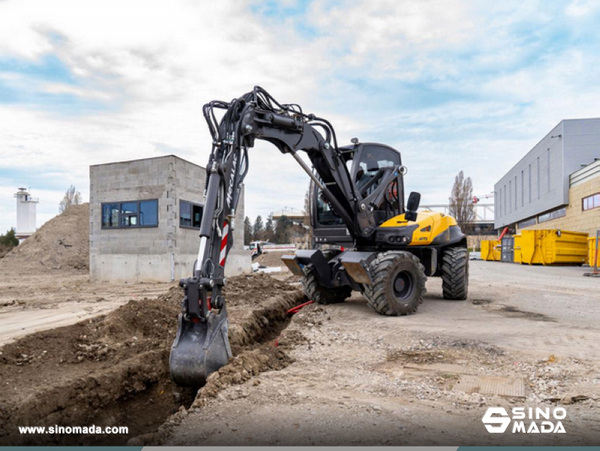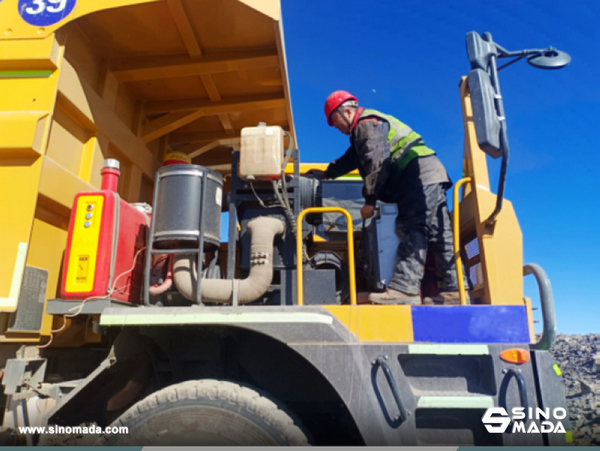Super Practical Loader Maintenance and Repair Methods
Why can't you increase the throttle when the loader diesel engine is just started?
After the loader diesel engine is just started, it should run at a low speed for 3 to 5 minutes. The purpose is:
1. Warm up: let the various parts of the engine body slowly and evenly heat up to reach the normal working temperature, reduce wear and avoid mechanical strain.
2. Ensure lubrication: When the diesel engine is just started, the lubricating oil has high viscosity and the parts are poorly lubricated. After warming up, the lubricating oil gradually reaches the lubrication parts to avoid dry friction and damage to the mating surface.
3. After the diesel engine is just started, the machine temperature is low and the diesel is not completely burned. At this time, if the throttle is increased and the fuel supply is increased, the excess unburned diesel will form carbon deposits, which will aggravate the diesel engine emissions. In addition, the excess diesel may flow into the crankcase along the cylinder wall, affecting the lubrication of the cylinder wall, and diluting the oil in the oil pan, reducing the lubrication performance and reducing the service life of the diesel engine.
For diesel engines equipped with exhaust gas turbochargers, more attention should be paid to warming up the engine. If the throttle is increased immediately after starting, the speed of the turbine increases, but the engine oil does not have time to reach the surface of each lubrication part, and good lubrication cannot be formed. It is easy to cause the turbine shaft to get stuck, causing a fault.
What are the reasons for the sudden shutdown of the loader diesel engine, and how should it be handled?
When the diesel engine suddenly stops while working, do not restart the diesel engine immediately. You should carefully analyze and check the reasons for the sudden shutdown of the diesel engine, and start it again after repair.
The main reasons for the sudden shutdown of the loader forklift diesel engine are:
1. The fuel supply system fails and causes a sudden shutdown. This shutdown phenomenon is caused by air entering the diesel engine fuel supply circuit or the interruption of fuel supply. Before the diesel engine suddenly stops, the speed fluctuates and the operation is unstable. The reasons for the interruption of fuel supply are:
a. The diesel tank is insufficient and the fuel should be added;
b. The oil circuit is not tightly sealed. When this kind of fault occurs, it can be judged by bleeding the fuel system after the shutdown. If a large amount of foamy oil bubbles are released at the bleed screw by pumping oil with a hand oil pump, the engine is shut down due to oil gas in the oil. The sealing of the low-pressure oil circuit should be carefully checked.
C. The camshaft of the injection pump is broken or the rolling key is broken, and the connecting plate is broken. The injection pump should be repaired.
2. Sudden shutdown caused by crankshaft locking
After the shutdown, observe whether the water temperature is abnormal and whether there is water in the oil pan (the engine oil is emulsified). If the inspection is normal, the diesel engine crankshaft should be turned. If it feels difficult to turn or cannot turn, it can be judged that the bearing is burned or the crankshaft is locked after the bearing is burned.
After the failure of burning bearings occurs, the cause should be found, the oil channel should be cleaned, the crankshaft should be ground, the bearings and a few parts (connecting rods, etc.) should be replaced before the machine can be assembled and tested.
3. Sudden shutdown caused by cylinder pulling
What are the main causes of early wear of loader diesel engines?
Early wear of diesel engine refers to the phenomenon that the diesel engine power drops significantly and fuel consumption increases due to the wear of the main moving parts (such as piston rings, crankshafts, bearings, cylinder liners, etc.) in a short period of use, so that the diesel engine cannot continue to work effectively. The main reasons for early wear of diesel engine are as follows:
① The new engine runs under heavy load without running-in;
② The air filter fails;
③ Improper use and maintenance, poor oil quality;
④ Poor combustion, excessive carbon deposits in the cylinder.
What is the cause of cylinder liner strain of loader? How to prevent it?
The main manifestations of cylinder liner strain are: knocking sound of piston in cylinder, reduced power of diesel engine, blue or white smoke from oil combustion; thinning of oil, pressure drop, etc.
The reasons for cylinder strain are:
① Failure of cooling system, overheating of machine, excessive expansion of piston after heating.
② Insufficient oil, deterioration or impurities in oil, causing poor lubrication.
③ The gap between the piston and the cylinder wall is too small (mostly seen in new engines or diesel engines that have just been overhauled).
④ The piston ring is broken or stuck.
⑤ The piston pin retaining ring fails, causing the piston pin to move.
What are the measures to reduce the wear of the loader cylinder liner?
In addition to taking anti-corrosion and wear-resistant measures in design and manufacturing to reduce the wear of the cylinder liner, the following points should also be noted in the use and maintenance projects:
⑴ Correct starting and starting
After starting the cold engine, it should be warmed up for 3 to 5 minutes under a small throttle state before starting the vehicle. When running at first, it should work at a low load for a period of time, and then work at a high load after the temperature rises.
⑵ Maintain the normal temperature of the engine
If the diesel engine temperature is too low, it cannot maintain good lubrication, which will increase the friction of the cylinder wall; if the temperature is too high, the cylinder strength will be reduced and the wear will be aggravated, and the piston may even expand excessively and cause a "cylinder pull" accident. The normal operating temperature of the diesel engine is 80℃~90℃. When it exceeds 95℃, the load should be reduced or the engine should be shut down for cooling.
⑶ Maintain good lubrication
Frequently check and maintain the engine oil quality and oil level, change regularly and select the appropriate viscosity engine oil according to the season to ensure good lubrication.
⑷ Strengthen the maintenance of the "three filters" (air filter, oil filter and diesel filter)
This is the main measure to prevent mechanical impurities from entering the cylinder, reduce cylinder wall wear and extend the service life of the engine, which is especially important for loader diesel engines that are often in high dust content.
⑸ Improve maintenance and repair quality
Strictly perform maintenance and repair operations in accordance with the technical standards specified in the diesel engine maintenance manual. Adjust and control each matching clearance (opening clearance) to prevent the wear between the piston and the cylinder wall from being accelerated due to improper maintenance and maintenance.
What are the reasons for the frequent flushing of the cylinder gasket of the loader diesel engine?
The cylinder gasket is burned by the high-temperature gas in the cylinder, which is called "flush cylinder gasket", also known as "burned cylinder gasket".
After flushing the cylinder gasket of the diesel engine, abnormal phenomena such as "bubbling" of the water tank, water inflow of the oil pan, emulsification of the engine oil, and drainage of the exhaust pipe (white smoke) will generally occur. The main reasons for the cylinder gasket are: ⑴ Cylinder head deformation
The cylinder head is thermally deformed due to the alternating effects of high temperature and high pressure gas for a long time; improper disassembly (not disassembling in sequence) will also cause deformation. After the cylinder head is deformed, the raised part cannot press the cylinder gasket tightly, causing high temperature gas leakage and burning of the cylinder gasket.
⑵ The height of the cylinder liner boss is different, causing individual cylinders to be poorly sealed.
In order to make the cylinder liner and cylinder gasket pressed tightly on the cylinder body and maintain good sealing, it is generally required that the cylinder liner end face boss plane is higher than the cylinder body by a certain size (generally 0.05~0.12mm), and the difference in the protrusion of the cylinder liner of the same diesel engine (or two cylinders under the same cylinder head) is also specified (generally 0.05mm).
If it exceeds the specified value, it may cause insufficient sealing pressure, causing high pressure and high temperature gas to burst out and damage the cylinder gasket.
⑶ The cylinder head bolts are loose or the tightening torque is insufficient.
When the diesel engine leaves the factory, the manufacturer provides a maintenance manual with clear requirements for the torque of the cylinder head fastening bolts. During maintenance, the cylinder head should be tightened strictly according to the specified time and method.
⑷ The cylinder gasket assembly method is incorrect or the cylinder gasket is of poor quality.
⑸ The machine is not working properly and overheating causes the cylinder gasket to be punched.
What are the reasons for the increase in the oil level of the loader diesel engine oil pan? How to eliminate it?
The increase in the oil level of the diesel engine oil pan is caused by the entry of diesel or water into the oil pan. The increase in the oil level of some diesel engines without crankshaft rear skeleton oil seals may also be due to the entry of hydraulic transmission oil into the oil pan.
The entry of diesel into the engine oil will reduce the viscosity of the engine oil, deteriorate the engine oil, and cause the relative motion surfaces to fail to form an oil film and aggravate the wear. The entry of water into the engine oil will emulsify the engine oil and lose its lubricating effect.
Therefore, once the oil level in the oil pan is found to be rising, the engine should be stopped for inspection, troubleshooting, and oil replacement before operation. The main reasons for the rise in the oil level in the oil pan are:
1. A cylinder (or several cylinders) of the diesel engine is not working or working poorly
Because the injector needle valve is stuck in the open state or the injection pressure is low, it causes poor atomization, so that the diesel injected into the cylinder cannot completely form a mixture and burn, but flows into the oil pan from the piston ring, cylinder liner and piston side, causing the oil level in the oil pan to rise. In this case, the "cylinder disconnection method" can be used to find which cylinder or cylinders are not working or working poorly, find out the fault and eliminate it. If necessary, the injector can be tested.
2. Water in the oil pan causes the oil level to rise
After water enters the oil pan, the engine oil will emulsify. The main reasons for water in the oil pan are:
① The cylinder gasket is burned and leaks. If you check the water tank at this time, you will find that there are "bubbling" and "boiling" phenomena in the water tank. You should check and replace the cylinder gasket;
② Cracks in the cylinder liner cause cooling water to penetrate into the cylinder and flow into the oil pan. The cylinder liner should be replaced. In this case, the water tank will also "bubble" and "boil". Especially in winter, the phenomenon of cylinder cracking due to "sudden cooling" is more common;
③ The cylinder liner water block ring fails and leaks. The water block ring should be replaced. In this case, there is no bubbling in the water tank.
3. For some diesel engines, due to damage to the rear crankshaft oil seal (or not a skeleton oil seal), if the torque converter leaks seriously, the hydraulic transmission oil will leak into the oil pan, causing the oil level to rise. At this time, there is no diesel smell in the engine oil, and it is not emulsified. The torque converter should be repaired.
Why is there oil in the water tank of the loader diesel engine?
When checking the water level of the diesel engine radiator (water tank), if the cause is found in the water tank, start the diesel engine after eliminating the fault. There are two situations that may cause oil in the water tank:
1. The diesel engine oil cooler (water cooler) is frozen and cracked, the water cooler core is cracked, and the sealing gasket (ring) is damaged, causing the oil to leak into the cooling system, resulting in oil entering the water tank. The oil cooler should be opened for inspection. If the oil cooler is frozen and cracked, it is generally accompanied by low oil pressure.
2. The hydraulic transmission oil-water cooler is poorly sealed or frozen and cracked, resulting in oil in the water tank. The hydraulic transmission oil-water cooler should be disassembled and inspected.
In order to prevent the water cooler from freezing and cracking, when using the diesel engine in cold seasons, do not forget to drain the water in the diesel engine oil cooler and the hydraulic transmission oil-water cooler.
What are the ways to extend the service life of diesel engine oil for loaders?
1. Maintain the oil filter on time;
2. Prevent fuel from entering the diesel engine oil pan;
3. Keep the diesel engine oil pan and valve cover relatively closed to prevent debris from invading the oil;
4. Select the appropriate brand of oil as required;
5. Change the oil regularly as required. When changing the oil, drain the oil while it is hot after stopping the engine, and thoroughly clean the oil pan to prevent the remaining waste oil from mixing with the new oil and corroding the new oil.
6. Maintain the normal operating temperature of the diesel engine. The normal operating temperature of the diesel engine is 80℃~90℃. Too high temperature will make the oil thinner, accelerate the oxidation and deterioration of the oil, and reduce the lubricating effect of the oil. If the temperature is too low, the diesel will not be fully burned, and part of the oil gas will condense into liquid and flow into the oil pan along the cylinder wall to dilute the oil.
What are the reasons for the wandering of the loader diesel engine?
When the diesel engine is running, the speed changes periodically from high to low in a large range, which is called "wandering".
There are many kinds of "wandering" phenomena. Sometimes the accelerator pedal wanders at a certain position, sometimes it wanders at idle, and sometimes it wanders under a certain load.
The essence of wandering is that the normal speed regulation function of the diesel engine is destroyed. Usually, the resistance of the moving parts in the fuel injection pump components (such as the rack) or the speed governor is too large, which reduces the sensitivity of the speed governor and causes wandering; the clearance of the internal parts of the fuel injection pump or the speed governor is too large, which makes the change of the fuel supply lag behind the speed change too much and may also cause wandering; the wandering phenomenon may also be caused by oil circuit failure, mainly:
1. The low-pressure oil circuit is blocked, the oil supply is not smooth, and the continuity of the oil supply is destroyed;
2. The oil supply oil circuit is inhaled;
3. The injector is poorly atomized or stuck, which makes the cylinders work unevenly and wander.
When checking the cause of the wandering failure, you should first check the oil circuit failure. If there is no fault in the oil circuit, then repair the fuel injection pump speed governor and verify the fuel injection pump.
It should be noted that the hunting at idle speed is related to the following factors in addition to the above reasons:
a. The injector works poorly at low speed, mainly because the injector is worn or the manufacturing quality is poor, which leads to no atomization or oil dripping at low speed, but works normally at medium and high speed.
b. The injection pump does not supply enough oil at idle speed. After the idle oil volume is increased, the hunting disappears;
c. The idle limit screw is improperly adjusted, resulting in idle hunting. The idle limit screw should be adjusted.
2024-08-28
